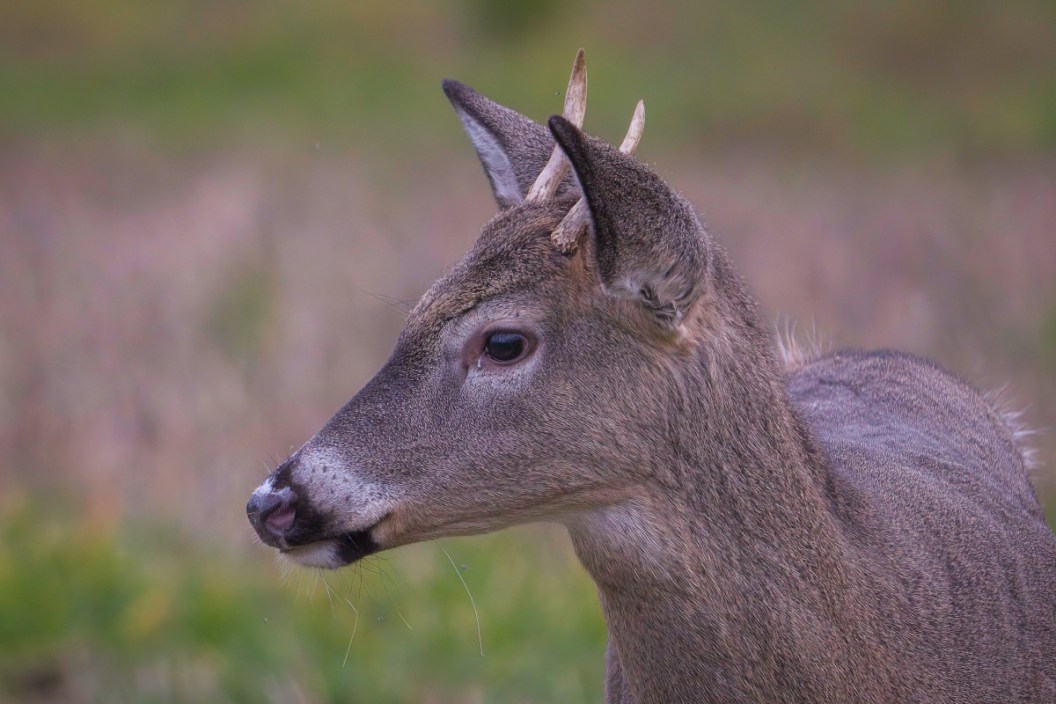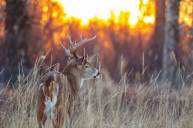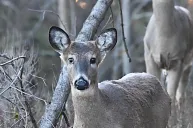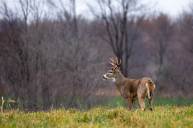"Once a spike, always a spike." If I had a dollar for all the times I've heard that phrase, well, I wouldn't need to be writing for a living. We're not exactly sure where this phrase came from, but we assume it's something an old-time hunter came up with way back in the day. The real question being, is there any true substance behind it? Or was some hunter simply trying to justify his shooting of a spike buck to his buddies? Well, wildlife management and deer research have advanced significantly in the last 20 years. After all, at this point it seems as if we should be putting these older ways of thinking about deer hunting and deer population management to the test.
Fortunately for us, many scientists already have done just that. In fact, there has been more than one study into deer antler development and the effects an animal with spike antlers can have on the population. However, you might be surprised to hear there's a lot of division among wildlife biologists have on the matter. Some studies have indicated the culling of bucks with what were considered "inferior" antlers was a good thing, and others have indicated you may be killing off some serious big buck potential. Here are both sides of one of hunting's oldest debate so you can draw your own conclusions.
Arguments in Favor of Shooting Spikes

Lightwriter1949 via Gety Images
The Texas parks and Wildlife Department has a rather interesting 168-page document on its website that chronicles approximately 26 years of penned deer research done at the Kerr Wildlife Management Area. The study looked at 20 generations of penned whitetail deer to make its conclusions. It's a fascinating, if highly technical, read. Another document sums up what their research shows more succinctly. In short, they believe all spikes should be shot immediately.
They come to this conclusion because they determined that antler development is based in genetics, and half of their potential is provided by their mother. They concluded that not all whitetail bucks have the potential to become trophy bucks. They also concluded: "Early or late birth does not affect antler development if deer receive adequate nutrition."
In case you were wondering, they concluded that good nutrition for a whitetail was a diet of at least 16 percent protein that is also supplemented with phosphorus and calcium, which aid in antler development in male deer. They also concluded that a buck's antler development will improve only up to a certain point. They concluded that an old deer with worn teeth was less likely to be able to get as much nutrition as a younger animal.
This study is interesting because they also found fork-antlered yearlings tended to produce larger antlers that had more points the next year than their yearling spike buck counterparts. In fact, they concluded that a buck that grows at least six points on his first set of antlers is probably the ideal animal to let walk.
"Antler traits are passed from one generation to the next," the study reads. "The mass or heaviness of the antler had the highest heritability. Main beam length and number of antler points are also highly heritable."
Ultimately, this study concluded that the antler potential of the herd could be improved through selectively removing bucks with less-desirable antler traits and leaving ones with desirable ones to breed the does. This seems to reinforce the long-held beliefs on deer management that a spike or buck with smaller antlers should be culled. However, this isn't the only study done on the matter.
Arguments in Favor of Letting Spikes Walk

Lightwriter 1949 via Getty Images
We'll admit the results of the Texas study look rather conclusive. However, things get confusing when you start looking at the results of another Texas study done on the massive Comanche Ranch from 2006 to 2015. According to the National Deer Association, the study involved researchers from Texas A&M and the Mississippi State University Deer Lab. It was more of a study in the effects of culling than a specific study of spikes, but it's worth looking at because one part of the study was an intensive culling effort including young bucks that had fewer than six points in their first year.
Basically, the study saw researchers using helicopters and net guns to capture literally thousands of deer, which were then studied and then either released back into the deer herd or culled under special scientific research permits. The scientists set aside three blocks of land for different culling practices. One 3,500-acre block saw intensive culling of all yearling bucks with fewer than six antler points and older deer with fewer than nine points, or bucks that hadn't reached 145 inches by age 5. Another area did something different by focusing cull efforts on an older age class of 3.5 to 5.5 years of age and leaving the yearling age structure alone.
The results were that the area with moderate culling saw no added benefits to the efforts, and the intensive cull area saw a severe population crash since a stunning 85 to 100 percent of yearlings ended up culled. This warped the buck to doe population from an original ratio of 1:1 to 1:6.
What's more, the researchers did DNA analysis in which they built family trees of bucks and their male offspring. They compared the antlers of all the bucks in these family trees. The surprising thing here was there were big bucks that produced buck fawns that later grew small antlers, and "cull-worthy bucks" that later produced fawns that became giants. The conclusion they ultimately reached was the quality or antler size of a buck was not an accurate prediction of the potential of his male offspring.
Other studies have acknowledged the work of the pro-cull studies done at the Kerr Wildlife Management Area in the first study we mentioned. However, the Noble Research Institute says there may be a flaw in looking at penned deer versus wild deer.
"Even though some spike yearlings will not grow antlers as large as some fork-antlered yearlings, culling bucks will not change antler characteristics of future generations in a population of free-ranging deer like it can with penned deer," Mike Porter of the Noble Research Institute wrote on its website.
It is the belief of Noble that poor nutrition is likely the most common cause of spike bucks. They also cite late-born fawns that drop as late as July—often to yearling does that entered their first estrous cycle late and were bred later—as being more likely to develop spikes for their first set of antlers because they got a later start than the does that dropped in May. Both the Noble Institute and Mississippi State University Deer Lab note they have recorded spike bucks that later grew large racks that most deer hunters would consider trophies.
Another issue that these anti-cull studies cite is that because bucks get at least half their antler genetics from their mother, that means hunters would need to selectively harvest does. Since it's impossible to determine what kind of genetics a doe is carrying, that creates quite the conundrum for hunters.
Should You Shoot a Spike Deer?
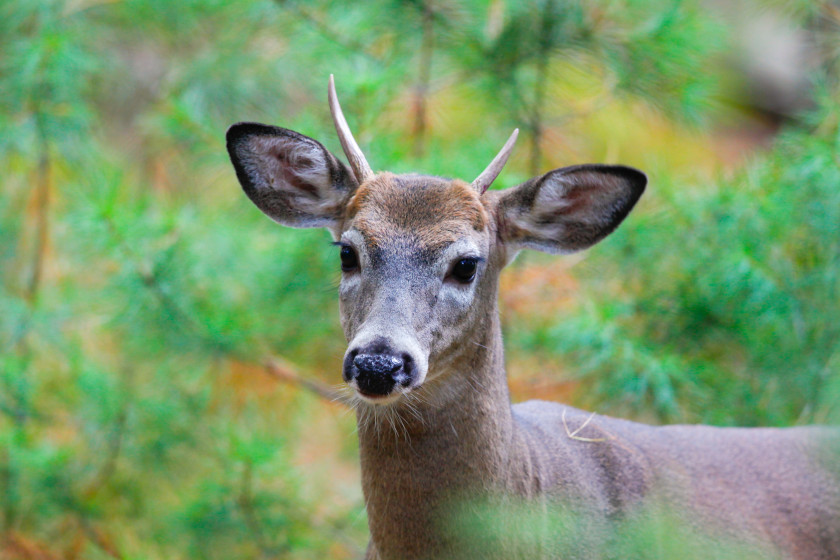
Louise Wightman via Getty Images
That's the big question after reading about the conflicting research, and I don't think there are any easy answers to it either. I've talked with plenty of hunters who swear by culling spikes and other bucks with undesirable antler traits out of the gene pool. I've also encountered just as many who won't even think of raising their gun or bow on anything that isn't the right age or won't score enough to make the books. Both sides swear their method is the right one, and I don't know what to believe anymore.
I will note that here in Michigan, I see spikes every hunting season, and I've always passed them up. In over 20 years of hunting, I've never seen a spike buck that wasn't also an obvious yearling. I tend to disbelieve the idea of mature bucks growing spikes their whole lives. But I also think that's not to say some bucks don't go downhill if they somehow defy the odds and make it past 5.5 years of age.
At the end of the day, I personally believe there are way too many variables in play to make a one-size-fits-all approach to deer management, and that includes the culling of spikes. After all, factors such as the richness of the soil and its ability to produce quality food sources probably come into play when it comes to antler growth. I know full well it's not the same in the big woods of northern Michigan as it is here in the southern portion, which is full of corn and beanfields. There's going to be some major differences in bucks here and those found in a place like Texas.
It's probably best for each hunter or land manager to come up with their own plan on what to do with spikes. This may require some experiment to find out what works and what doesn't. From there, it's probably just a matter of sticking with it. Because until more research comes along that can prove definitively whether spikes are inferior or not, we're all just guessing. And I think most hunters will agree with me that we have only scratched the surface when it comes to figuring out the habits and genetics of whitetails.
For more outdoor content from Travis Smola, be sure to follow him on Twitter and Instagram. For original videos, check out his Geocaching and Outdoors with Travis YouTube channels.
